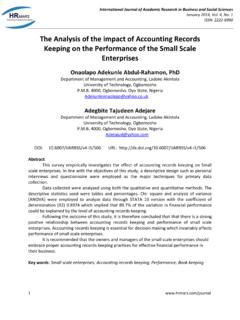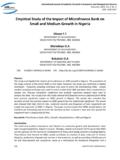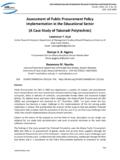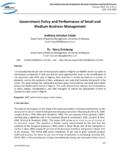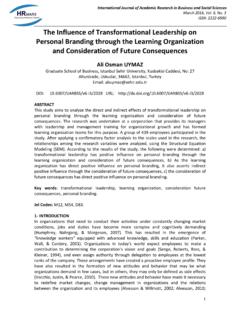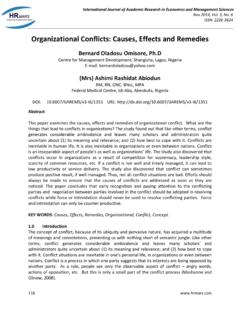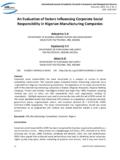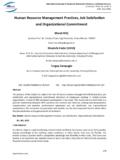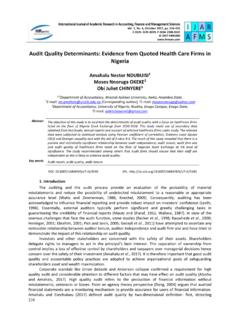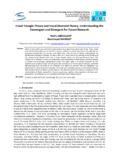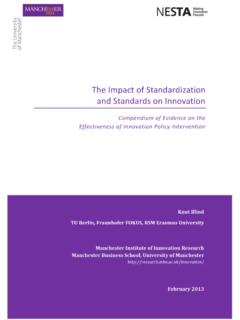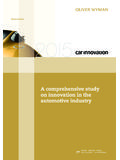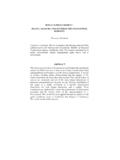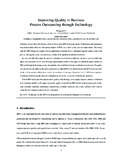Transcription of Assessment of Challenges facing Small and Medium ...
1 International Journal of Academic Research in Accounting, Finance and Management Sciences Vol. 4, , April 2014, pp. 303 311. E-ISSN: 2225-8329, P-ISSN: 2308-0337. 2014 HRMARS. Assessment of Challenges facing Small and Medium Enterprises towards International Marketing Standards: a Case Study of Arusha Region Tanzania Paluku KAZIMOTO. PhD., E-mail: Abstract Small and Medium Enterprises (SMEs) new or existing, often face Challenges when approach products providers for both enterprise fixed capital investment and market standards. The insufficient supply of microloans is a major issue, particularly where business creators are unemployed persons. This study aims to assess Challenges facing Small Medium Enterprises (SMEs). towards international marketing standards.
2 Study findings show that SME's face Challenges to access international marketing unaware of regulations and standards, lack of financial support from the Government, poor understanding of consumer's needs and services, lack of essential entrepreneurial skills and weak networking structures to penetrate into international marketing. The study therefore recommends the improvement of information that is available to SME owners; to the government and other partners avail accessibility to financial facilities with reasonable interest rate of return, encourage more advertisements and use of up to date technology for business and international marketing standards through seminars and trainings on entrepreneurship, and networking structures for export and import of goods and services.
3 The study also recommends that the government supports SME's to ensure that they play their role in helping improve the economy of Tanzania and improve the country's Gross Domestic Product (GDP). Key words International Marketing, International regulations and standards, consumer needs and Assessment , entrepreneurship skills, and international market networking structure DOI: URL: 1. Introduction Small and Medium Enterprises (SMEs), new or existing, often face certain Challenges when they approach products providers for both enterprise fixed capital investment and market standards. The insufficient supply of microloans is a major issue, particularly where business creators are unemployed persons, women or form part of ethnic minorities with different cultural dependencies.
4 Supporting the supply of microloans is therefore not only an issue of entrepreneurship and economic growth, but also of social inclusion (Karatas et al., 2008). Tanzania has been in the constant wheel of fighting for liberalization of market in the African's sister countries. This gave to the country the political power but remaining behind economic development (NSGRP, 2008). Further, it was reported that there are more than million SME projects in Tanzania that employed more than 3 million people, which represent 20% of labor force in Tanzania, where SMEs are vital engines for the economy growth and play a great role for gross domestic product of Tanzania (NSGRP, 2008). Deakins (2009) agreed that there are quiet numbers of potential reasons why firms and organizations participate in international marketing; these include SME growth, employment, sales increment, marketing benefits through interaction based factors associated with international standards in overseas markets.
5 AMA. (2007) reports that international marketing is for good help for the country to establish good process of market planning and strategies for product and services conception, pricing, and promotion, and distribution. 303. International Journal of Academic Research in Accounting, Finance and Management Sciences Vol. 4 (2), pp. 303 311, 2014 HRMARS. Market provides evidence that markets entry costs for start-up firms are significant across countries (Djankov et al., 2002). SME policy of Tanzania (2002) indicates that Tanzania has been in the constant move to build and support SMEs for job creation and income generation activities. Despite the ongoing reform programs for economy in Tanzania, SMEs face Challenges for international marketing standards.
6 Arusha being the heart of the economic development of Tanzania because of its level of tourist's sites and also the capital city for the East Africa Community, this study aimed to assess the Challenges facing SMEs in Arusha towards international marketing standards. Objectives of the study This study aims to assess Challenges facing Small Medium Enterprises (SMEs) towards international marketing standards in Arusha. Research Questions What are the Challenges facing SMEs towards international marking in Arusha? 2. Literature review Non-Access to International Marketing International marketing is a multinational process of planning and executing international marketing standards for pricing, promotion, distribution of ideas, goods and services to create exchange that satisfy individual and organizational on national and international level (Kottler, 2009).
7 Firms expand into international markets slowly and deliberately over time for the market that are familiar to their home market (Johanson et al., 1977). International market has generally been assumed to take place when the production process becomes more standardized to take advance of certain factors unique to specific locations. Kottler (2012) and King and McGrath (2002) show that there are strategies that entrepreneurs can apply to penetrate the international market such as exportation, joint venture, and direct investment for international production. Education program is one of the most important factors that positively have impact on the growth of SMEs. A considerable growth of SMEs in international markets characterizes an international involvement.
8 The global market provides new business opportunities such as innovation and new export markets with activities for large firms and between SMEs themselves. SMEs have played a central role in developing the private sector and integrating into the global economy as an efficient way to alleviate poverty in developing countries (Raynard and Forstater, 2002). Abonyi (2003) recommended that to participate effectively in global markets, SMEs are required to have and maintain significant capabilities in different areas ranging over the industry value chain, including production, design, distribution, branding, and marketing. Amyx (2005) finds that the most significant Challenges facing SMEs is the negative perception that their clients have on their ability to provide adequate and quality services for their needs.
9 Longenecker et al. (2005) and Oketh (2000) find that improper planning and poor management have been posited as main causes of failure for SMEs. Lack of credit has been identified as one of Challenges facing SMEs and that hinders their growth towards international marketing. And with the current trends of globalization, SMEs are facing a turbulent environment in which competition is intensifying whilst their size and other existing constraints remain the same. Lack of International Marketing Standards and regulations Fariza (2012) suggested that Governments should continuously upgrading the environment so that it is conducive to the international growth and development of SMEs, by proactively seeking international business opportunities, strengthening legal institutions and administrative and financial establishments, and formulating appropriate policies.
10 Marketing and information are two of export problems, which revolve around lack of knowledge of foreign markets business practices and competition strategies, lack of strategies for sales management, lack 304. International Journal of Academic Research in Accounting, Finance and Management Sciences Vol. 4 (2), pp. 303 311, 2014 HRMARS. of are percents to be major barrier in exporting of SMEs in developing countries (Siringoringo et al., 2009). Li (2004) provides evidence that international marketing knowledge is depending on the relevance and depth of marketing information available to the firm. Karatas et al. (2008) find insufficient supply of microloans is a major issue, particularly where business creators are unemployed persons, women or form part of ethnic minorities.
